Abstract
Data recorded in a herd health management system were obtained from 32 registered Holstein dairy herds from British Columbia. Frequencies of disease were described, and the effect of herd, age, year, season, and the interrelationships between diseases within a lactation on the occurrence of disease were evaluated. Lactational incidence rates were computed for diseases with a short period of risk (ie, udder edema, milk fever, retained placenta, metritis, displaced abomasum, and ketosis), whereas for diseases with a longer period of risk (ie, cystic ovaries, mastitis and stable footrot), incidence densities were calculated. Overall, the disease incidence was low and showed an increase in frequency by year, which we attributed to more observing and complete recording by the owner, rather than an actual increase in disease incidence. Most diseases occurred early in lactation and their frequency increased with lactation number; the exception was udder edema, which occurred mainly during the first 2 lactations. An informal path model of disease interrelationships was made conditional on herd. Based on the results we inferred 2 independent pathways: one started by udder edema, and the other by milk fever. Udder edema was directly associated with mastitis occurrence from 0 to 30 d in lactation, metritis, and cystic ovaries. Mastitis from 0-30 d in lactation increased the risk of both mastitis from 31-150 d in lactation and cystic ovaries. Both of these increased the risk of late lactation mastitis. Milk fever was directly related with displaced abomasum, which increased the risk of footrot. In general, diseases that occurred in early lactation tended to increase the risk of other diseases later in lactation.
Full text
PDF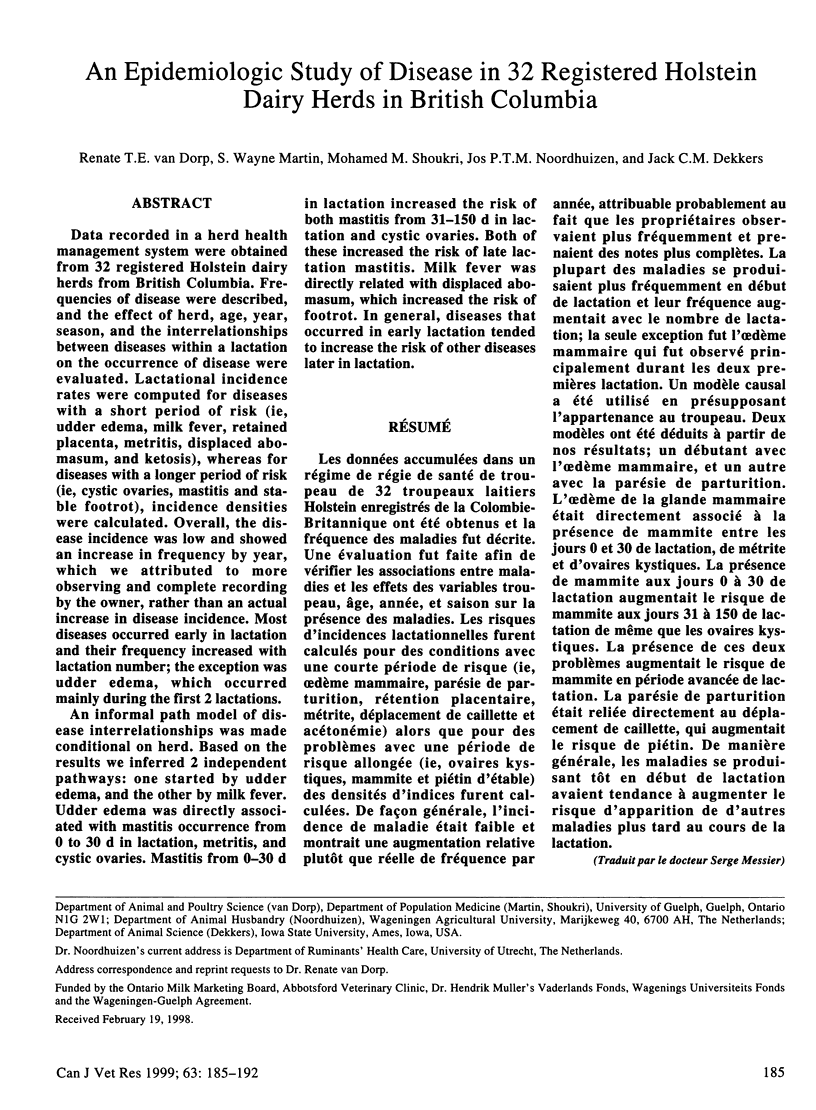
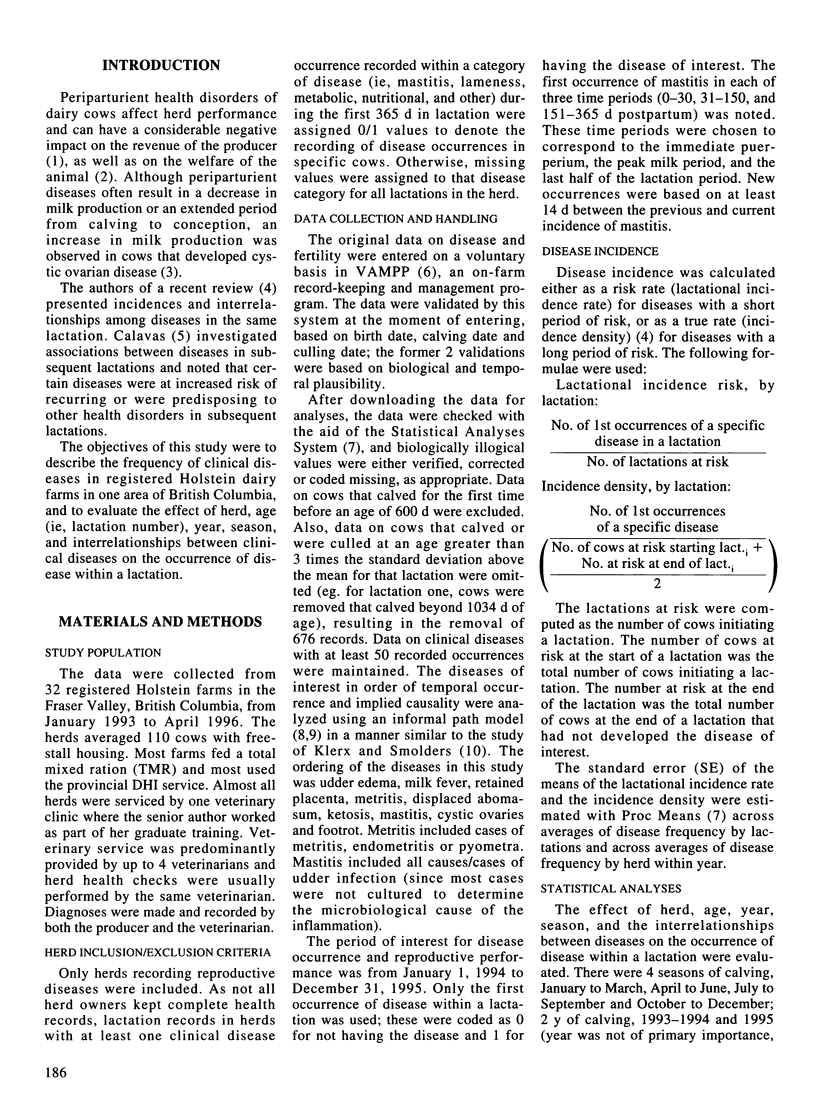
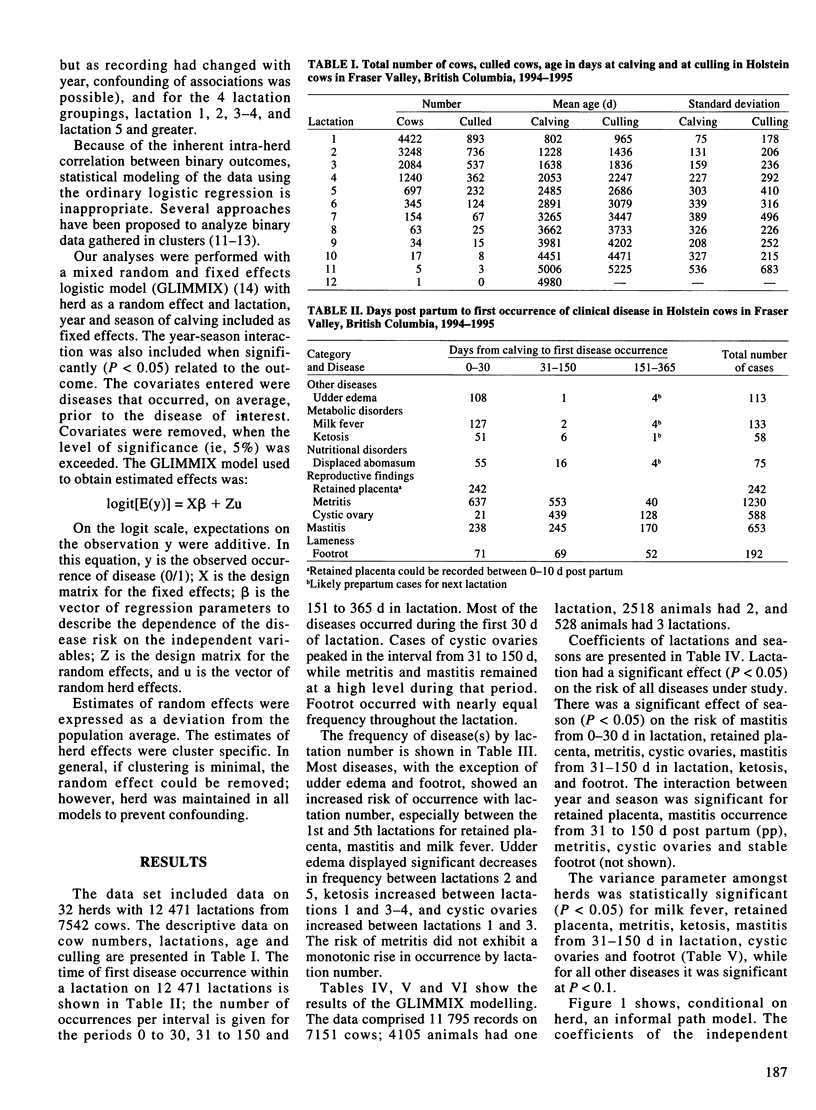
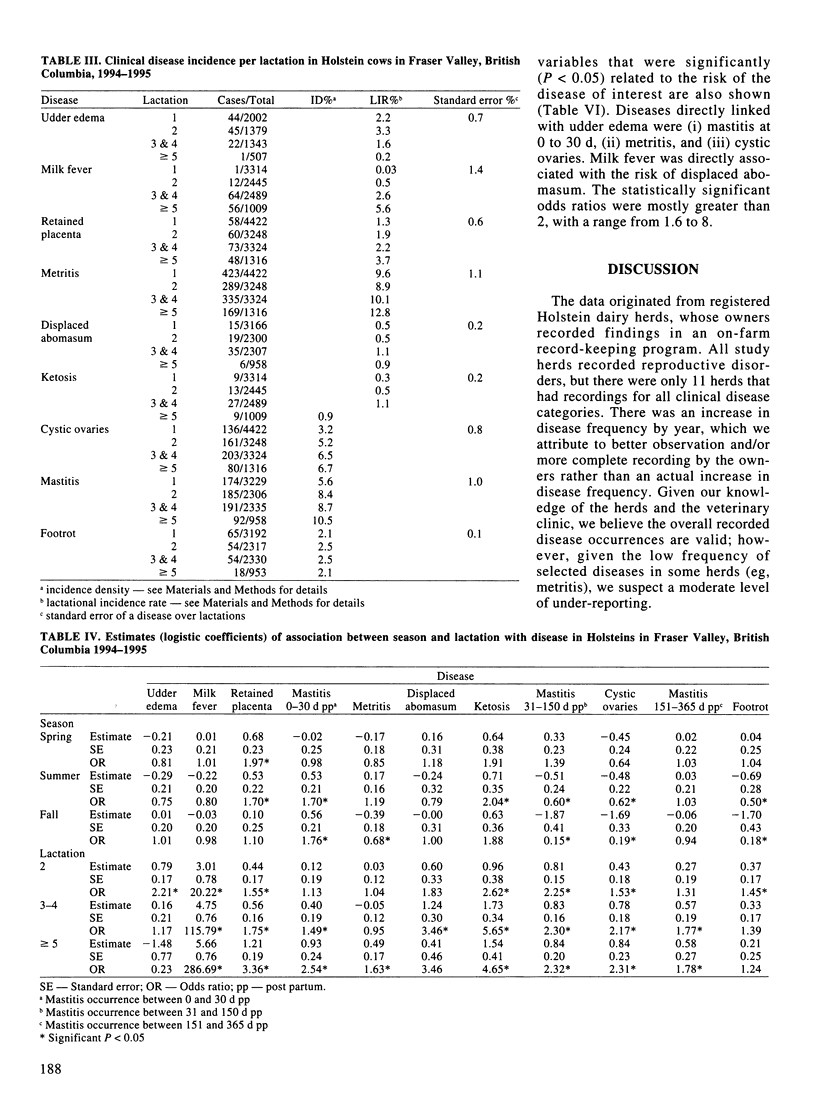
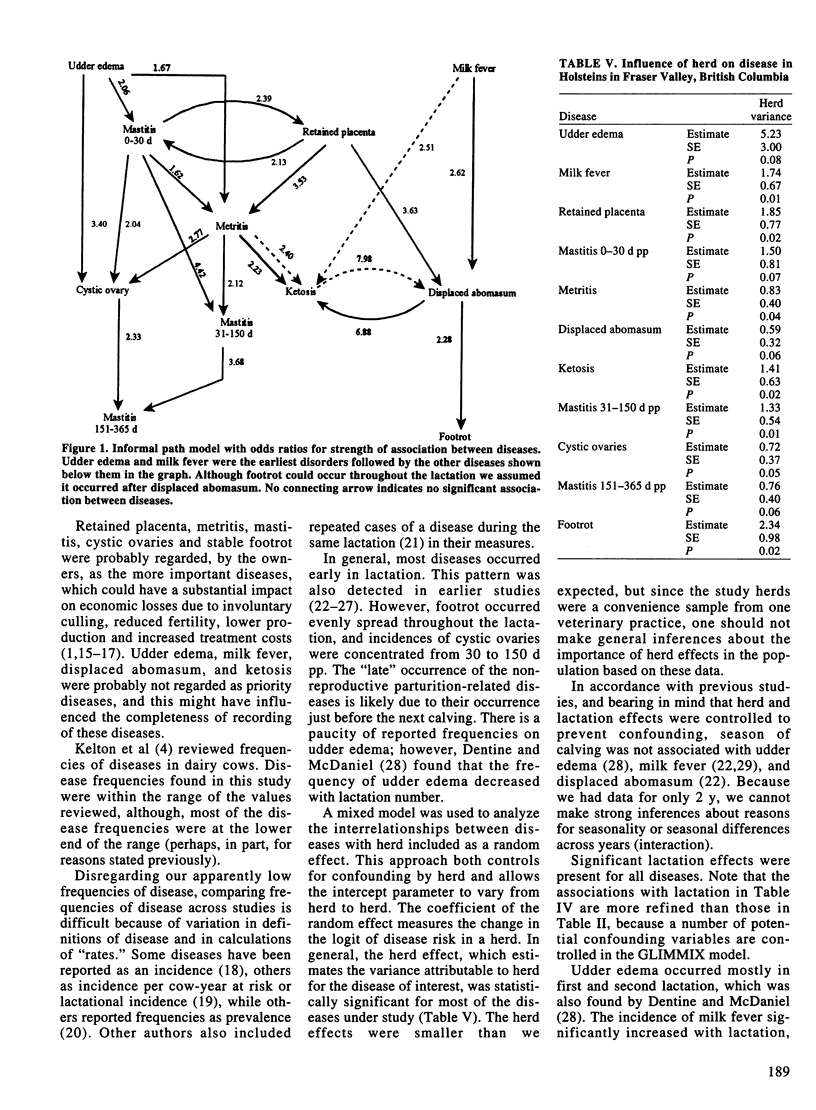
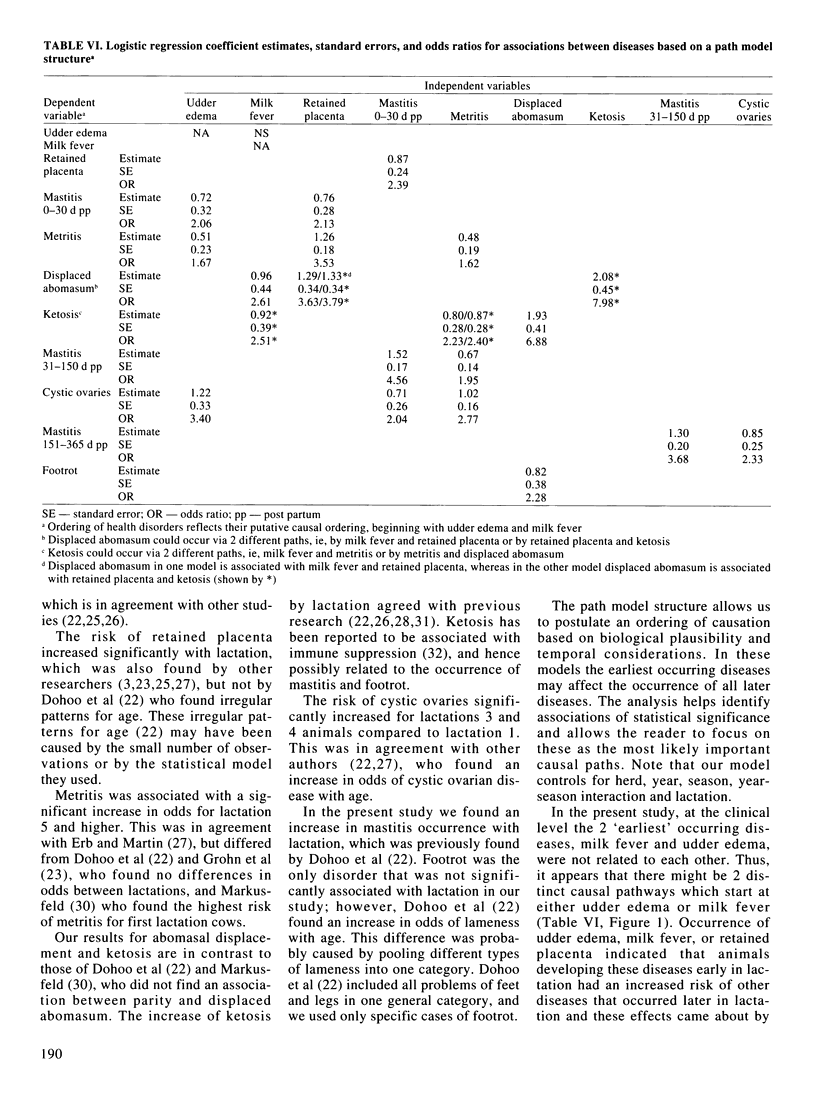
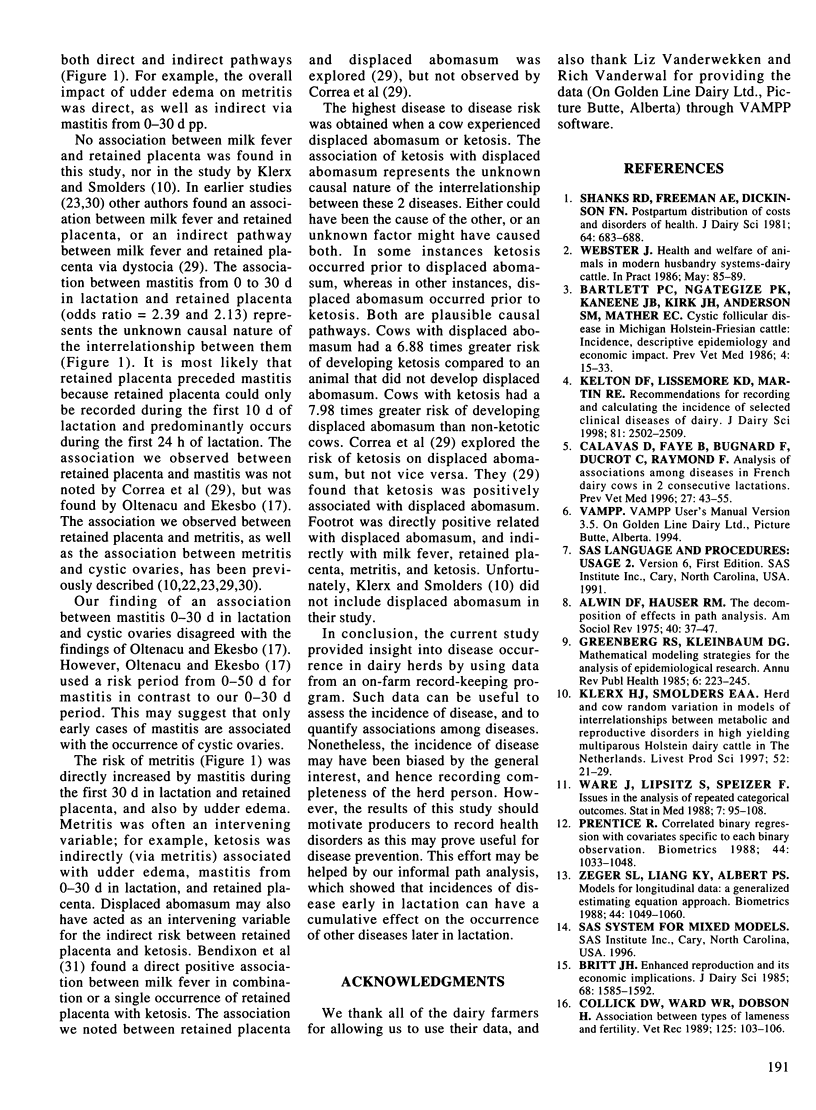
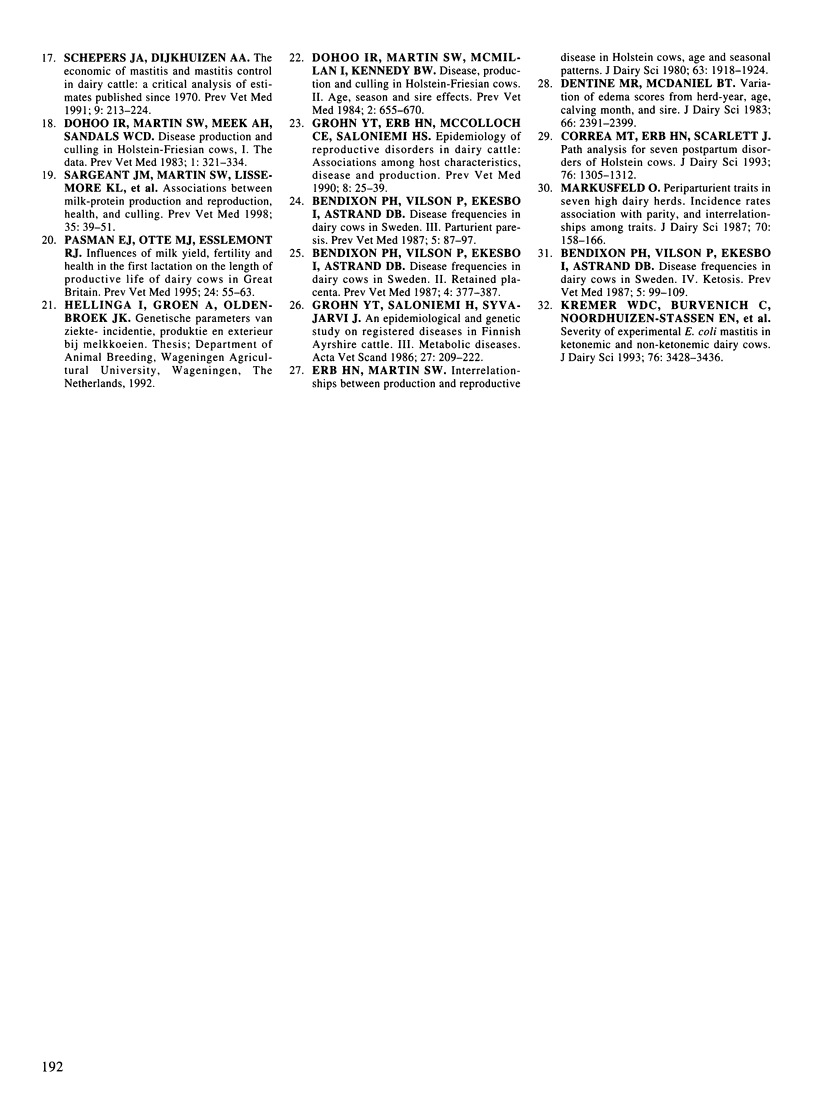
Selected References
These references are in PubMed. This may not be the complete list of references from this article.
- Britt J. H. Enhanced reproduction and its economic implications. J Dairy Sci. 1985 Jun;68(6):1585–1592. doi: 10.3168/jds.S0022-0302(85)80997-8. [DOI] [PubMed] [Google Scholar]
- Collick D. W., Ward W. R., Dobson H. Associations between types of lameness and fertility. Vet Rec. 1989 Jul 29;125(5):103–106. doi: 10.1136/vr.125.5.103. [DOI] [PubMed] [Google Scholar]
- Correa M. T., Erb H., Scarlett J. Path analysis for seven postpartum disorders of Holstein cows. J Dairy Sci. 1993 May;76(5):1305–1312. doi: 10.3168/jds.S0022-0302(93)77461-5. [DOI] [PubMed] [Google Scholar]
- Dentine M. R., McDaniel B. T. Variation of edema scores from herd-year, age, calving month, and sire. J Dairy Sci. 1983 Nov;66(11):2391–2399. doi: 10.3168/jds.S0022-0302(83)82097-9. [DOI] [PubMed] [Google Scholar]
- Erb H. N., Martin S. W. Interrelationships between production and reproductive diseases in Holstein cows. Age and seasonal patterns. J Dairy Sci. 1980 Nov;63(11):1918–1924. doi: 10.3168/jds.S0022-0302(80)83159-6. [DOI] [PubMed] [Google Scholar]
- Greenberg R. S., Kleinbaum D. G. Mathematical modeling strategies for the analysis of epidemiologic research. Annu Rev Public Health. 1985;6:223–245. doi: 10.1146/annurev.pu.06.050185.001255. [DOI] [PubMed] [Google Scholar]
- Gröhn Y., Saloniemi H., Syväjärvi J. An epidemiological and genetic study on registered diseases in Finnish Ayrshire cattle. III. Metabolic diseases. Acta Vet Scand. 1986;27(2):209–222. doi: 10.1186/BF03548165. [DOI] [PMC free article] [PubMed] [Google Scholar]
- Kelton D. F., Lissemore K. D., Martin R. E. Recommendations for recording and calculating the incidence of selected clinical diseases of dairy cattle. J Dairy Sci. 1998 Sep;81(9):2502–2509. doi: 10.3168/jds.S0022-0302(98)70142-0. [DOI] [PubMed] [Google Scholar]
- Kremer W. D., Noordhuizen-Stassen E. N., Grommers F. J., Schukken Y. H., Heeringa R., Brand A., Burvenich C. Severity of experimental Escherichia coli mastitis in ketonemic and nonketonemic dairy cows. J Dairy Sci. 1993 Nov;76(11):3428–3436. doi: 10.3168/jds.S0022-0302(93)77681-X. [DOI] [PubMed] [Google Scholar]
- Markusfeld O. Periparturient traits in seven high dairy herds. Incidence rates, association with parity, and interrelationships among traits. J Dairy Sci. 1987 Jan;70(1):158–166. doi: 10.3168/jds.S0022-0302(87)79990-1. [DOI] [PubMed] [Google Scholar]
- Prentice R. L. Correlated binary regression with covariates specific to each binary observation. Biometrics. 1988 Dec;44(4):1033–1048. [PubMed] [Google Scholar]
- Sargeant J. M., Martin S. W., Lissemore K. D., Leslie K. E., Gibson J. P., Scott H. M., Kelton D. F. Associations between milk-protein production and reproduction, health, and culling. Prev Vet Med. 1998 Apr 16;35(1):39–51. doi: 10.1016/s0167-5877(97)00061-5. [DOI] [PubMed] [Google Scholar]
- Shanks R. D., Freeman A. E., Dickinson F. N. Postpartum distribution of costs and disorders of health. J Dairy Sci. 1981 Apr;64(4):683–688. doi: 10.3168/jds.S0022-0302(81)82630-6. [DOI] [PubMed] [Google Scholar]
- Smolders I., Van Belle K., Ebinger G., Michotte Y. Hippocampal and cerebellar extracellular amino acids during pilocarpine-induced seizures in freely moving rats. Eur J Pharmacol. 1997 Jan 14;319(1):21–29. doi: 10.1016/s0014-2999(96)00830-8. [DOI] [PubMed] [Google Scholar]
- Ware J. H., Lipsitz S., Speizer F. E. Issues in the analysis of repeated categorical outcomes. Stat Med. 1988 Jan-Feb;7(1-2):95–107. doi: 10.1002/sim.4780070113. [DOI] [PubMed] [Google Scholar]
- Webster J. Health and welfare of animals in modern husbandry systems--dairy cattle. In Pract. 1986 May;8(3):85–89. doi: 10.1136/inpract.8.3.85. [DOI] [PubMed] [Google Scholar]
- Zeger S. L., Liang K. Y., Albert P. S. Models for longitudinal data: a generalized estimating equation approach. Biometrics. 1988 Dec;44(4):1049–1060. [PubMed] [Google Scholar]


